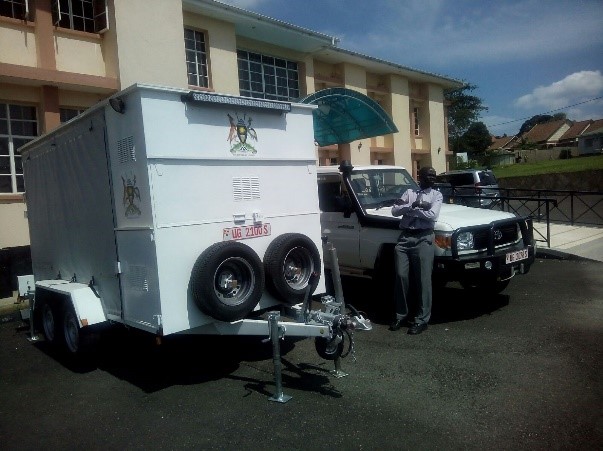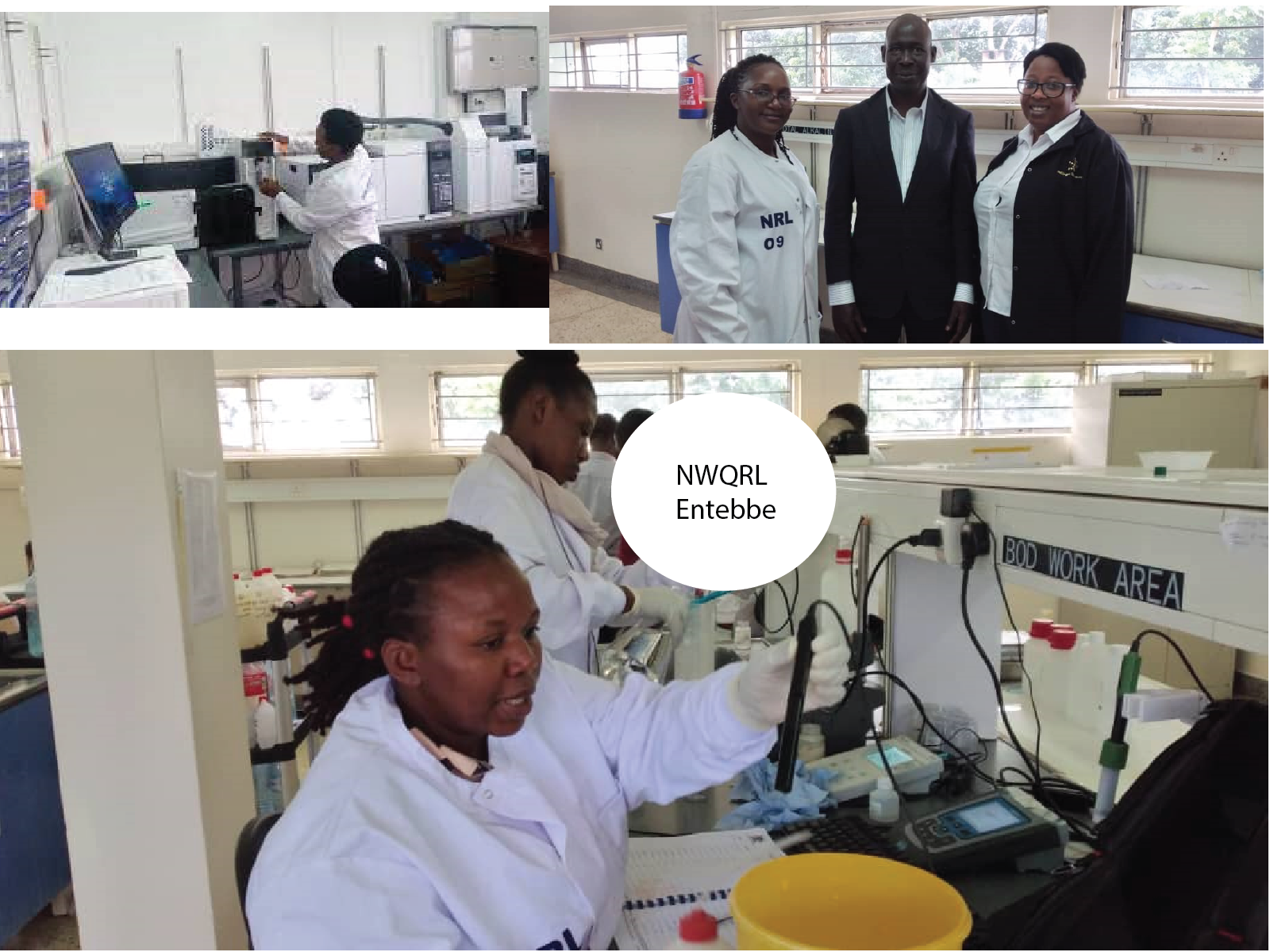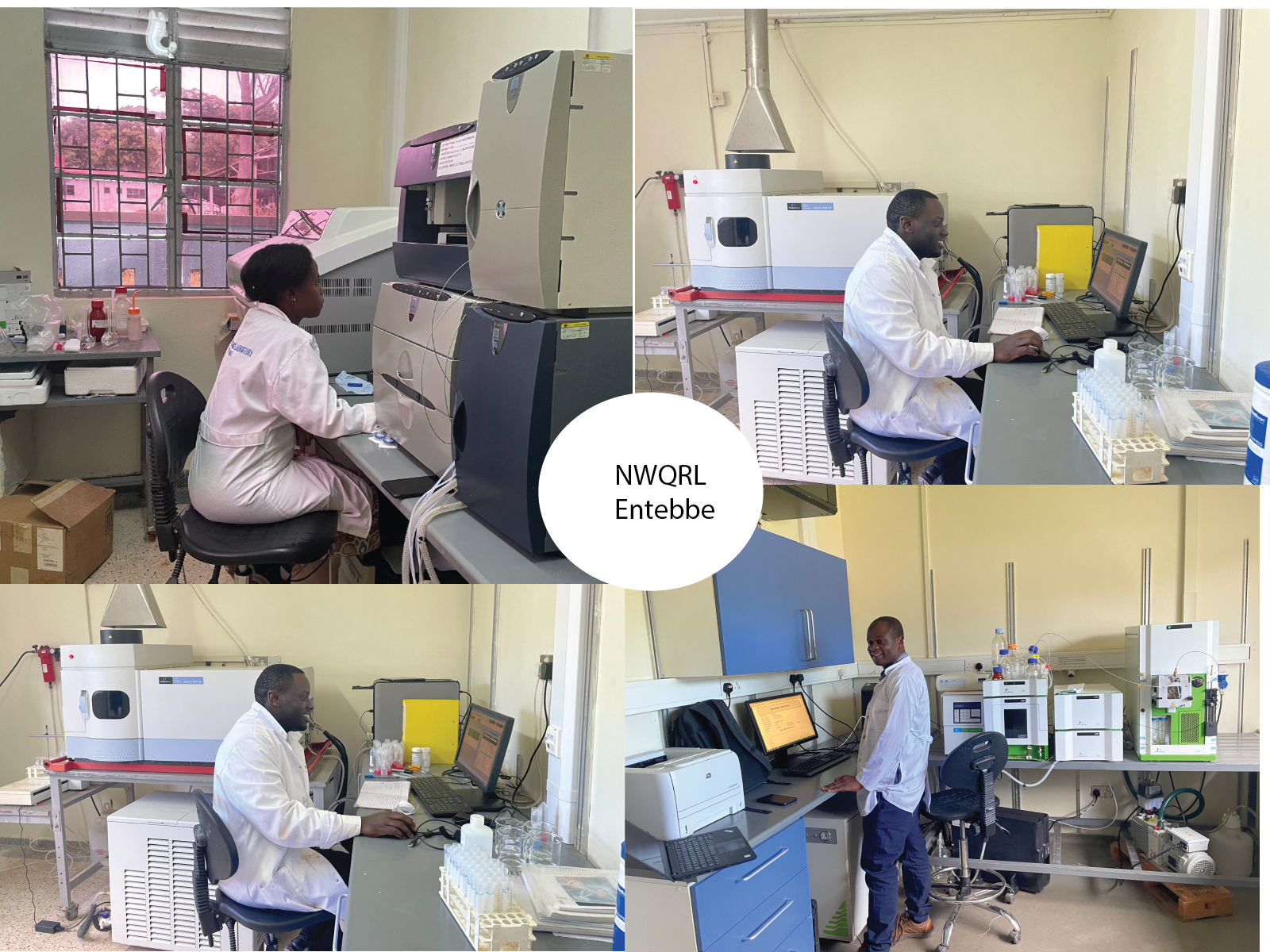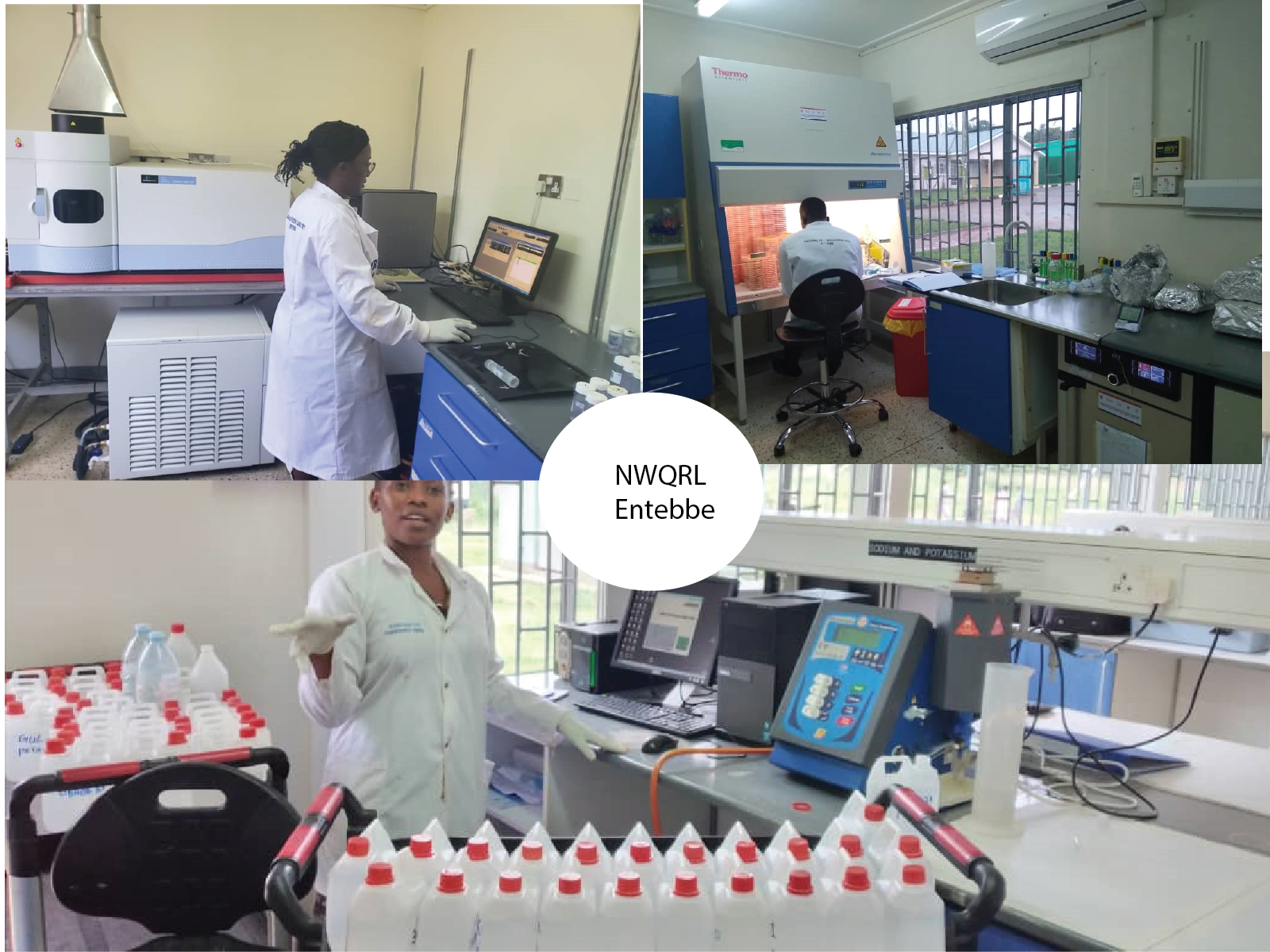ADVANCED ANALYTICAL LABORATORY
To address
challenges of emerging pollution (which include among others; oil and gas
pollution, discharge of active residual pharmaceutical compounds, increased
industrial wastewater, algal toxins etc), the National Water Quality Reference
Laboratory acquired state of the art equipment. These are;
• Inductively Coupled Plasma Optical
Emission Spectrometer (ICP-OES) for analysis of toxic metals in both drinking
and wastewater.
• Ion Chromatograph (IC) for analysis
of nutrient parameters in water samples
• Gas Chromatograph Mass Spectrometer
(GC/MS)
• Ultra High Performance Liquid
Chromatograph (UHPLC)
• Liquid Chromatograph Mass
Spectrometer (LC/MS)
• Gallery Plus for nutrient analysis
for the study of eutrophication
• Hazardous Air Pollutants on Site
(HAPSITE) used for monitoring oil and gas waste in Lake Albert using telemetry
(remote sensing)
The Oil and
Gas monitoring system comprises three individual components that include; the
fixed stations based in Pakwach and Kingfisher-Hoima, Mobile station and the
command and control center.
FIXED STATIONS VOC analysis
The fixed
station basically comprises of a Continuous Monitoring System (CMS 5000) which
is a Gas chromatograph for identification of Volatile Organic compounds
(VOC’S), and a Remote controller.
Volatile
organic compound include chlorinated solvents and fuel components. The most common VOCs that are found in
drinking water are chlorinated solvents and fuel components.
Chlorinated
solvents: These are widely used in industry and in common household products.
These chemicals are or have been used as degreasing fluids for many different
purposes such as dry-cleaning clothes, de-caffeinating coffee, cleaning metal
machinery, and dissolving grease build up in septic tanks. Some chlorinated solvents are found in such
household products as spot removers, typing correction fluids, adhesives,
automotive cleaners, inks, and wood furniture cleaners. Vinyl chloride is used to make plastic
materials, such as vinyl and plastic wrap, and water pipes.
Fuel components:
These are chemicals that are found in products such as gasoline, kerosene, and
heating oil. For example, methyl tert-
butyl ether (MTBE) is added to gasoline as an octane-booster and as an
“oxygenator” (or “oxy- fuel”) to reduce carbon monoxide emissions. Benzene,
toluene, and xylenes (or BTX) have been used as solvents in the workplace and
are components of some household products, such as glues, paints, and
cleaners. Benzene is found in cigarette
smoke and car exhaust. MTBE is also used as a laboratory chemical and in
medicine to remove gallstones.
This
equipment at the fixed station quantifies target compounds in water and air.
The two sites were fully installed and the communications to the Command centre
tested.
WATER QUALITY MONITORING
The Department
operates a National network of 119 water quality monitoring stations which
cover
surface water (Lakes and rivers), ground water and pollution impact
(wastewater). The monitoring functions have however been decongested into the
four Water Management Zones for easy management at catchment level. The
National monitoring network is under review after 3 years of operation of the
WMZs to water resources management better

The
Department updated its database to web-based National Water Quality Database where
data on samples from the various monitoring stations and data from other
stakeholders generated in the different Laboratories are entered, processed and
archived. The web-based database links with the Water Management Zones and has
the mobile application for real-time data capture.
The oil and
Gas equipment include MOBILE STATION for rapid deployment in cases of pollution
emergencies. This Comprises of the HAPSITE ER (hazardous air pollutants on
site) which is a Gas chromatograph mass spectrometer (GC/MS) for qualifying and
quantifying of Volatile organic compounds in the environment. This has
accessories for Air (gas probe), Water (Situ probe and Head space Unit) and
Soil monitoring (head space unit).This equipment can also be remotely
controlled from the command centre.
CMS 5000
HAPSITE ER Mobile station

COMMAND AND
CONTROL CENTRE
This has two
computers which are used to remotely monitor and control the two fixed
stations, and the mobile station. The Equipment are continuously monitored and
operated from this centre. A plan to operationalize the monitoring system is in
place.


